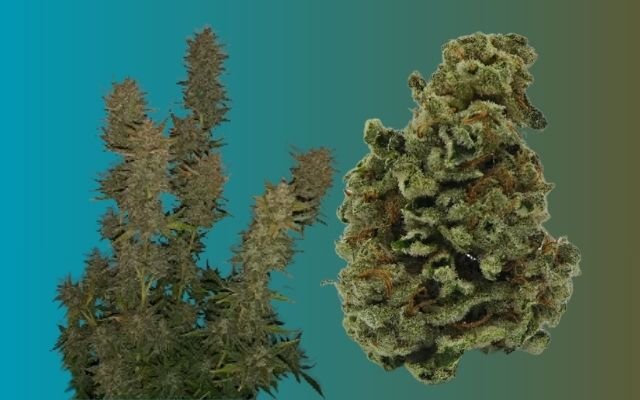Gorillas’ Herbal Remedies: A Natural Cure for Human Diseases?
Explore Gorillas' Herbal Remedies: A Natural Cure for Human Diseases? Learn how plants eaten by gorillas may inspire new treatments for humans.

Discover how Gorillas’ Herbal Remedies: A Natural Cure for Human Diseases? could help find new treatments through natural plant solutions. Finding new medicines is hard but recent research into the plants wild gorillas eat might provide surprising solutions. Scientists studying western lowland gorillas in Gabon’s Moukalaba-Doudou National Park found that these animals eat some of the same plants used in local traditional medicine. This raises questions about whether these plants might help treat human diseases.
Gorillas and Local Gorillas
To understand connection between gorillas’ diets and traditional medicine, a team of scientists spent time observing western lowland gorillas (Gorilla gorilla gorilla) in Gabon. They carefully noted plants the gorillas ate and then compared this list with plants used in local traditional medicine.
To find out which plants were used locally- researchers interviewed villagers living near the park. They spoke with traditional healers and herbalists to learn about the medicinal plants commonly used in their practices. Four plants were found to be included on both lists when scientists compared the gorillas’ diet with the herbal remedies used in the area.
| Aspect | Gorillas’ Diet | Traditional Medicine |
|---|---|---|
| Location | 🌍 Gabon’s Moukalaba-Doudou National Park | 🏡 Local villages near the park |
| Plants Observed | 🌿 Various plants eaten by western lowland gorillas | 🌱 Plants used in local traditional healing practices |
| Plants Identified | 1. Fromager Tree 🌳: Broad leaves, tall branches. | 1. Fromager Tree 🌳: Used for various ailments. |
| 2. Giant Yellow Mulberry 🍍: Large, yellow fruit. | 2. Giant Yellow Mulberry 🍍: Used for treating different health issues. | |
| 3. African Teak 🌲: Known for durable wood. | 3. African Teak 🌲: Used for its supposed healing properties. | |
| 4. Fig Tree 🌿: Various subspecies. | 4. Fig Tree 🌿: Used for potential health benefits. | |
| Purpose of Plant Use | ❓ Not clear if used medicinally; observation of diet patterns. | 🩺 Used to treat a range of health problems according to traditional practices. |
| Research Method | 👀 Observed and recorded plant consumption by gorillas. | 🗣️ Interviewed local healers and herbalists about medicinal plants. |
| Findings | 🔍 Plants eaten by gorillas match some used in traditional medicine. | 📜 Plants used locally have potential medicinal properties. |
| Potential Benefits | 🌟 May lead to new insights into plant-based treatments. | 💡 Provides traditional remedies that could inspire modern treatments. |
| Future Research | 🔬 More studies needed to explore medicinal potential. | 📈 Could lead to new discoveries in health solutions. |
Four Plants Identified
It was found that four herbs used by gorillas are also used in traditional medicine:
Fromager Tree (Ceiba pentandra): This large tree is native to tropical regions & is known for its broad leaves and tall, spreading branches. It’s used in traditional medicine for various ailments.
Giant Yellow Mulberry (Myrianthus arboreus): This tree produces large, yellow fruit and is used in traditional remedies to treat different health issues.
African Teak (Milicia excelsa): This tree is known for its durable wood and is also used in traditional medicine for its supposed healing properties.
Fig Tree Subspecies (Ficus spp.): Because of their possible health benefits, several fig trees have become common in the area and are used in traditional medicine.
Do Gorillas Use These Plants for Medicine?
It’s not entirely clear if gorillas eat these plants for medicinal reasons, but the possibility exists. Great apes sometimes use plants to help with their health. For example orangutan was seen making a paste from a plant to heal a wound. This shows that animals might use natural remedies for their health.
To find out if the plants gorillas eat have medicinal properties, researchers collected bark samples from the four different plant species. They analyzed these samples to check for antioxidant and antibacterial activity, which are indicators of potential health benefits.
Research Findings on Plant Properties
The tests on the bark samples revealed that all four plants contained compounds that might have medicinal effects. Here’s what the researchers found:
Phenols: These compounds are known for their antioxidant properties. They help protect cells from damage caused by free radicals, which are unstable molecules that can contribute to disease.
Alkaloids: These are naturally occurring compounds with potential medicinal effects. They are often used in traditional medicine for their various health benefits.
Flavonoids: Known for their antioxidant and anti-inflammatory properties, flavonoids can help reduce inflammation and protect cells from damage.
Each plant also showed some level of antibacterial activity against at least one strain of multi-drug-resistant E. coli. Multi-drug-resistant bacteria are a serious global health problem, contributing to infections that are difficult to treat. Bark of fromager tree, in particular, demonstrated strong antibacterial activity against all the E. coli strains tested.
This finding is significant because antimicrobial resistance—where bacteria become resistant to antibiotics—led to nearly 5 million deaths in 2019. Plants with antibacterial properties could help fight tough infections.
Potential Benefits and Future Research
Researchers think these plants could help treat diseases caused by free radicals and drug-resistant bacteria. The compounds in these plants might be useful for health problems that are hard to treat with current medicines.
Idea of using nature and great apes as inspiration for medicine is very promising. By studying how animals use plants to stay healthy scientists could discover new treatments for humans.
Research shows that exploring different types of medicines is important. Watching how animals use natural remedies could help scientists find new ways to solve health problems and improve our health.
- Regulatory Waters Rough for Underwater Data Center in San Francisco Bay
- Icy Origins: How Cold Water Could Have Sparked Life
- Bermuda Triangle: Science Debunks the Myths
Conclusion: Gorillas’ Herbal Remedies
Connection between the plants gorillas eat and traditional medicine is very exciting. While we need more research to fully understand how these plants might be used as medicine, early results are promising. Compounds found in these plants could lead to new treatments and better health solutions.
By studying how great apes use plants scientists might discover valuable information that can help create new medicines. Natural world including how animals use plants, could offer solutions to some of our toughest health problems. This research shows not only the potential of traditional medicine but also opens new ways to find effective treatments through nature.



